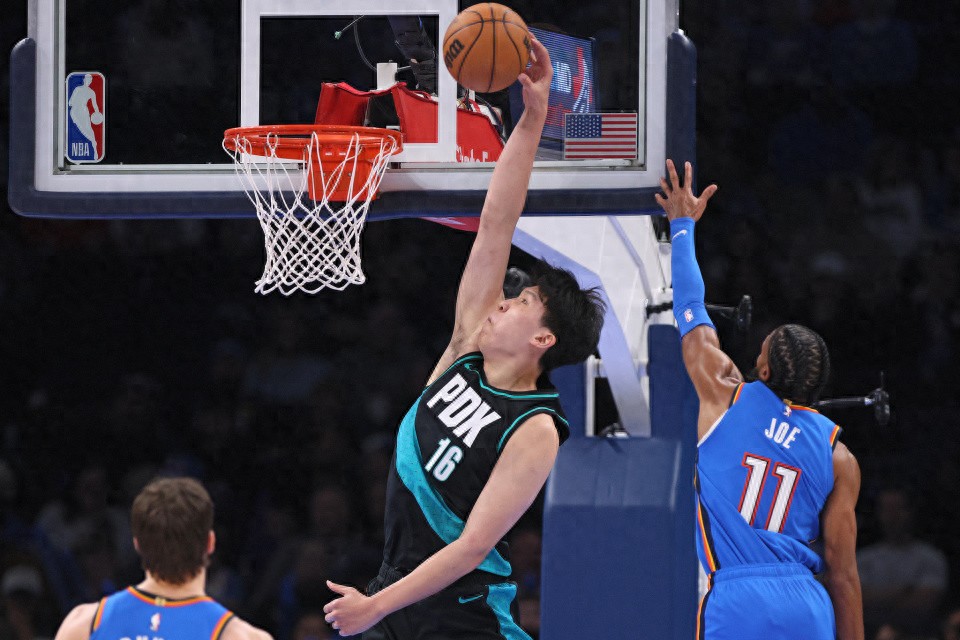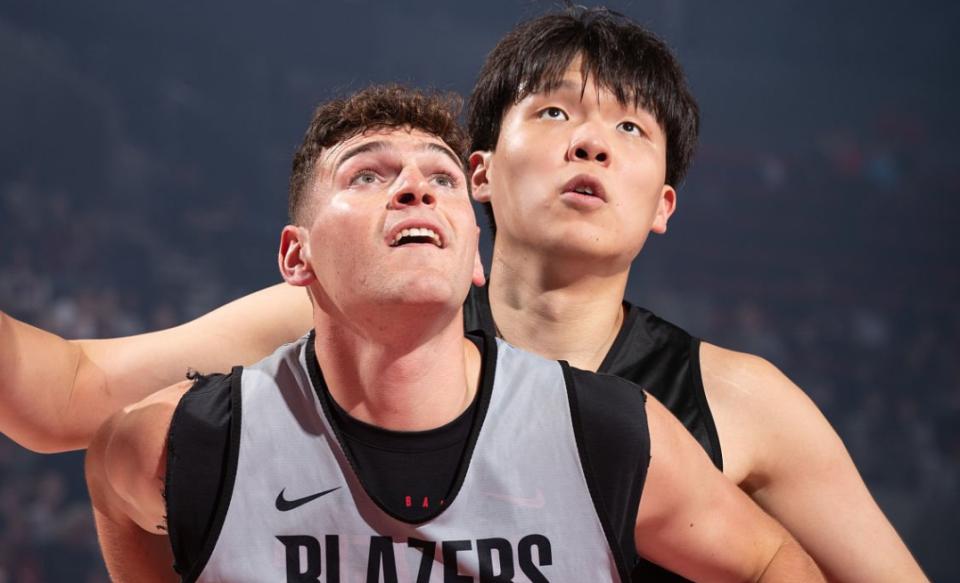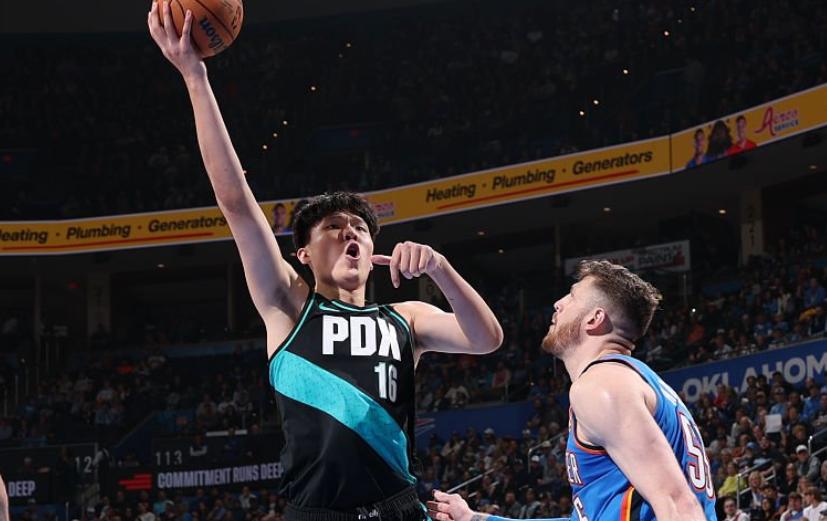A detailed analysis from the team reporter on Yang Hanson's situation: His trade value is quite limited, and the Trail Blazers' draft choices are considered unconventional.
On November 25th Beijing time, the early fluctuations in Yang Hanson's development have caused some concern among Trail Blazers fans. Team reporter Dave Deckard responded to a fan's question, providing a detailed explanation of Hanson's current status.


The fan wrote: "Can someone explain what the Trail Blazers or others find valuable in Yang Hanson? I honestly don’t see his worth. He’s not prepared for the NBA. Look at other rookies this year, many are already contributing to their teams, but Hanson? I don’t want to call him a bust yet, but I can’t help but shake my head."
Deckard’s detailed explanation is as follows:
First, let's acknowledge the validity of your perspective—
Yang Hanson’s playing time is indeed very limited: 8 appearances averaging only 8.5 minutes per game;
His performance has been underwhelming: shooting accuracy at just 32.3%, average rebounds per possession are mediocre, and passing—one of his core strengths—is almost offset by his turnovers early in his career (no highlights there);
Other rookies drafted around the same position as Hanson by the Trail Blazers (especially 11th pick Coward and 13th pick Quinn) have already contributed more than Hanson has so far.
But honestly, if you judge Yang Hanson’s future solely based on 68 total minutes of playing time, then your player evaluation skills are far superior to mine.

At present, Hanson still possesses the key traits that made the Trail Blazers select him: decent mobility relative to his height and build; the passing ability mentioned earlier; and fairly solid fundamental footwork and face-up shooting technique. He hasn’t fully demonstrated these yet—in fact, he hasn’t even made many basic shots—but you can see a developmental path from "potential" to "capability."
To improve, Hanson needs to reduce the time it takes to read the game and react, learn to use his body to create advantages in physical confrontations, develop a reliable finishing move, enhance his long-range shooting, and find his own rhythm and confidence on the NBA court.
For many rookies, completing this growth process takes time. Point guard is often considered the hardest position to develop, with center following closely behind. Point guards can at least mask growing pains by controlling the ball and scoring, but a player like Hanson lacks that “buffer.” Standing 2.16 meters tall, every mistake he makes on the court is magnified, clear as a close-up shot in a movie. He only has two states on the floor: either invisible or exposing all his flaws. This makes him easier to criticize than rookies like Chris Murray—Murray struggled early too, but aside from occasional three-pointers, his turnovers were less noticeable, whereas Hanson’s problems are fully exposed.

Actually, this fan’s question can be summed up with something I often say: give the player some time. Fans tend to be impatient, which is understandable. Not every player will shine, but most deserve a chance, and Hanson hasn’t truly had his yet.
However, your question brings up a more interesting and deeper topic worth exploring.
The Trail Blazers essentially used a lottery pick in the 2025 draft on Hanson, while in the 2024 lottery they selected center Klingen. Hanson is still in the development phase, and although Klingen has become a serviceable starting center, he hasn’t made a significant breakthrough—he performs well in his strengths but has also revealed some weaknesses in his second season.
Following your question further: if Hanson ultimately fails to meet expectations, and if Klingen remains mediocre and unremarkable (the type of player who fits into the lineup but can’t be a franchise cornerstone), what does that say about the Trail Blazers’ overall planning?
Avdiya has been the Trail Blazers’ most significant acquisition in the past four years, with considerable value and strong performance, and he was acquired through a trade; Kamara might be the second most impactful recent addition, also coming via trade.
Although both trades were successful, the quickest, cheapest, and most transformative way to improve a roster is ultimately through the draft. A rebuilding team can still recover from poor trades, but draft failures are much more damaging to a team’s development.

The Trail Blazers’ last two draft choices have been described as “against the trend”—in an era where the center position is becoming more replaceable or sometimes even dispensable, they have consecutively selected centers.Top players at any position are extremely valuable (Nikola Jokic and Victor Wembanyama are the best examples), but Klingen and Hanson clearly don’t belong to that level. Nowadays, signing non-elite centers doesn’t cost much, so there’s no need to use high draft picks to compete for them.
If the Trail Blazers keep using lottery picks on players who could be signed at a lower cost, then even if these players have slight talent advantages, it’s hard to make up for the opportunity cost of missing out on players who could shine on their own merits.
That said, we must also note that we don’t know much more about Coward than Hanson; players selected around or below Klingen’s draft spot in 2024 haven’t made waves in the league either. Thereforethe Trail Blazers’ choices of Klingen and Hanson were likely the best possible decisions at the time.
However,what is the current trade value of Klingen and Hanson? What could they be exchanged for? Would other teams be interested in them? Not to mention using them as assets in trade talks for top-tier stars. Seeing the rapid decline in value of high draft picks is indeed worrying.(Again, this is not necessarily because the players themselves are inadequate, but due to their position characteristics and growth pace).

Yang Hanson is not yet a problem, not even close to one. But the team’s long-term draft record is the real concern. The correct answer to questions about Hanson is “wait and see,” but fans’ reasonable retort is “how much longer? How much longer?” The follow-up question is: what exactly are we waiting for? A truly successful team wouldn’t even need to ask these questions.
Perhaps what we should really worry about is not how or when Yang Hanson will develop, but why so many expectations are placed on his growth. If the Trail Blazers were contending for the NBA Finals, Hanson might be seen as an exciting gamble whose progress would spark curiosity and joy. But now that people are anxious about him, it precisely reflects the Trail Blazers’ current predicament—or more accurately, how far they still are from their goals.










 Links
Links
 Contact
Contact
 App
App


